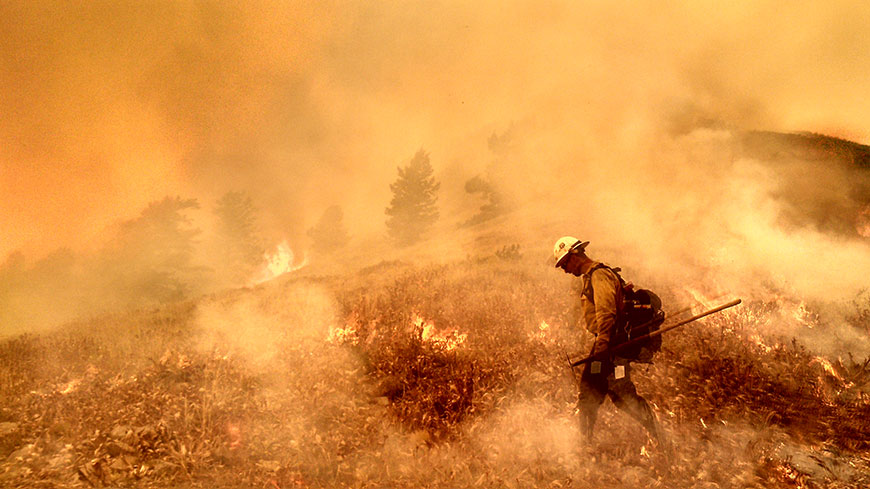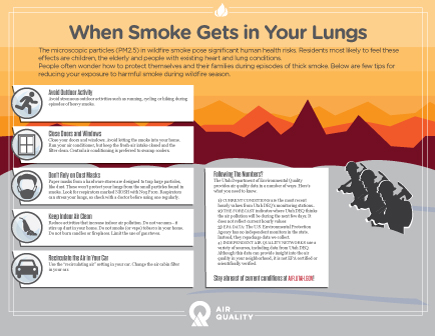
By Jared Mendenhall

Before residents of the Golden State were worried about coronavirus, there were concerns about the 2020 California wildfire season. Early predictions called for an especially long and devastating season due to the unusually dry months of January and February. Sadly, these fears were realized when a perfect storm of heat, lighting and drought converged to cause a record-breaking fire season.
The 2020 “California wildfires” are a series of ongoing wildfires burning across the state of California. As of Sept. 22, a total of 7,982 fires have burned 3.6 million acres. All said and done, 2020 will go down as the largest wildfire season in California history, according to the California Department of Forestry and Fire Protection.
The wildfires may be in California, but the smoke, and its health effects, are traveling across the country. The smoke pollution seen in Utah this summer originated from intense amounts of energy produced by blazes in California (and Oregon). This energy pushes the smoke plumes high in the atmosphere. There, the plumes travel along the prevailing winds. Once the plumes start to cool, they settle. The valleys of Northern Utah are one of the resting spots along the way.
The reason this smoke is a human-health risk is that it is made up of a complex soup of gases and microscopic particles. The technical term for some of these particles is PM2.5, or particulate matter smaller than 2.5 micrometers (approximately 1/70th the size of a human hair). The particles are generally so small our bodies have a difficult time filtering them out of our airways. They lodge deep in the lungs and can compromise our breathing and stress our hearts.
Here are a few things to know about smoke pollution.
It Looks Worse Than It Is
Smoke does a very good job of diffracting light—even better than the emissions that make up wintertime inversions. During smoke episodes, it often looks worse than an inversion episode due to smoke high in the integrated air column and greater light diffraction.
The integrated air column goes from the ground to the upper atmosphere. When smoke is high in the atmosphere it can diffract sunlight and create hazy conditions. For example, this summer we have seen days when long-range transport from smoke blows in from California but PM2.5 levels remain in the “Moderate” range.
Near surfaces smoke, on the other hand, is the smoke down closer to the surface. High levels of near-surface smoke can come from long-range transport. More commonly it comes from blazes nearby.
Trust Your Body
Your body does a good job of telling you when smoke concentrations are too high. If you are coughing, your eyes are itching and you can smell smoke, then the smoke concentration is reaching an “Unhealthy” level.
What Can You Do?
Northern Utah usually sees episodes of smoke pollution throughout late summer and early autumn. When the smoke gets thick, take it easy by avoiding exertion outdoors. This is especially true if you have an existing heart or lung condition. Most modern heating and air conditioning systems do a good job of filtering out smoke. The air inside will be cleaner.
Keep an eye on neighbors and loved ones with heart conditions. Make sure they are accounted for and healthy. Young children and the elderly are also at higher risks of developing problems during smoky periods.
Contribute less to the mess by using TravelWise strategies and driving less. Keep abreast of current conditions and the three-day forecast at air.utah.gov.
Lastly, be careful with open flames or anything else that could spark more blazes.

I am a public information officer for DEQ and a former marketer and magazine editor. Follow me on Instagram @Jarv801.
